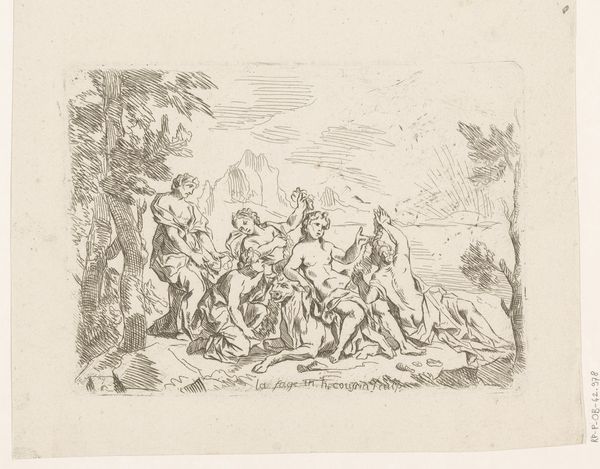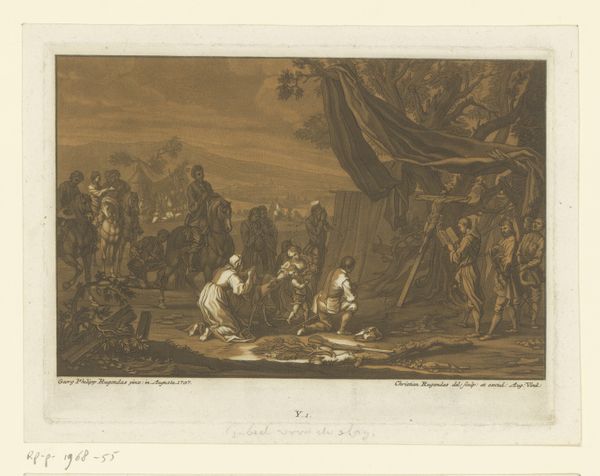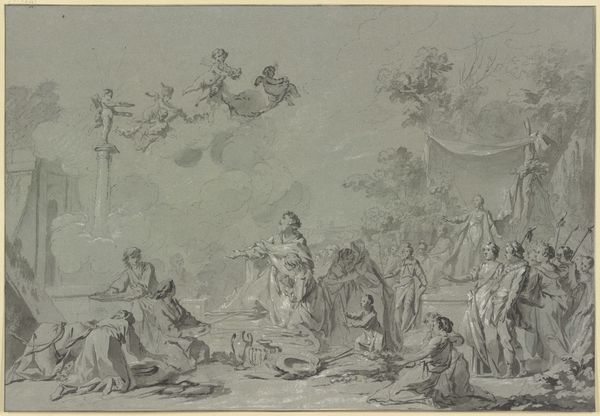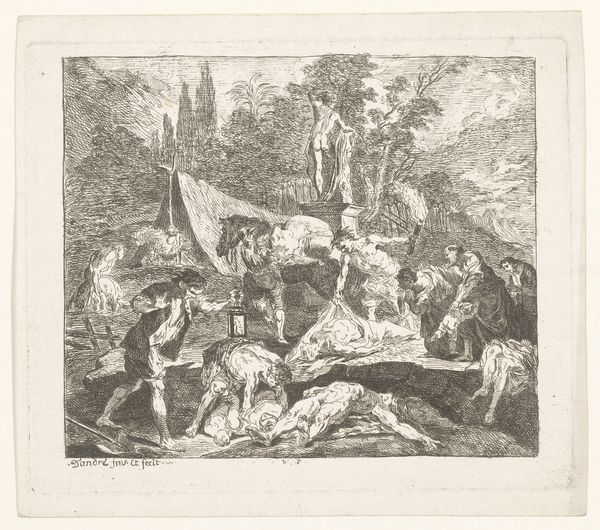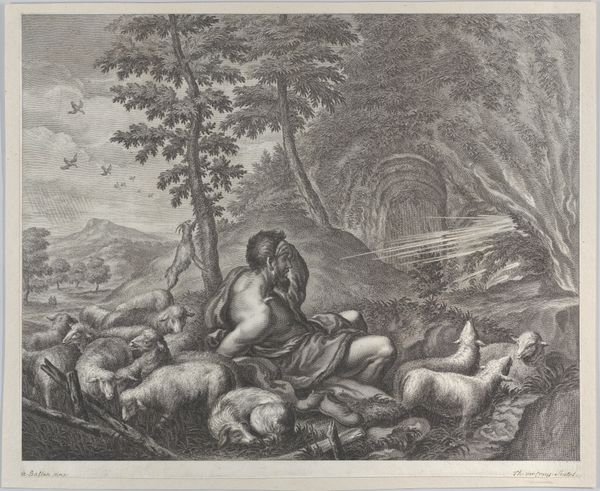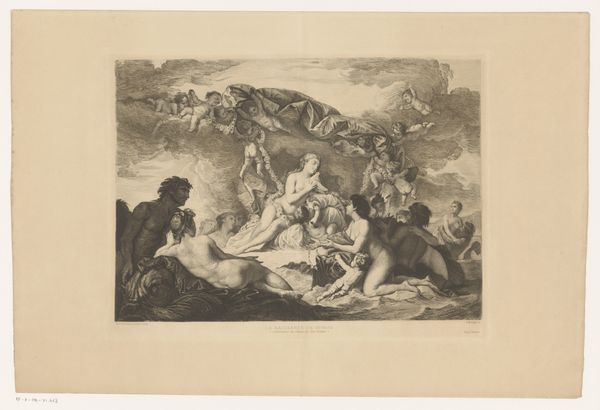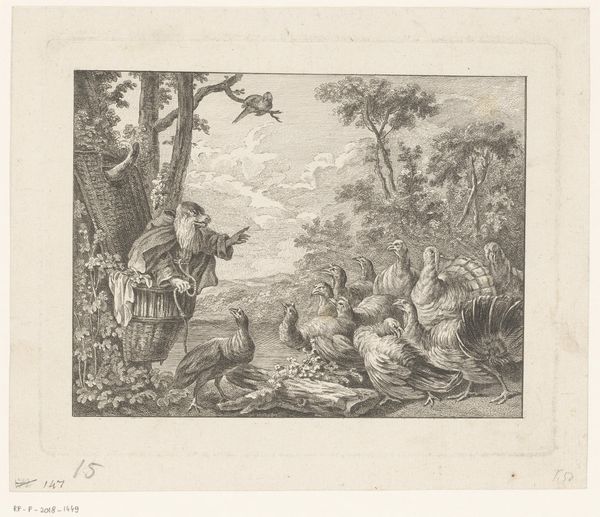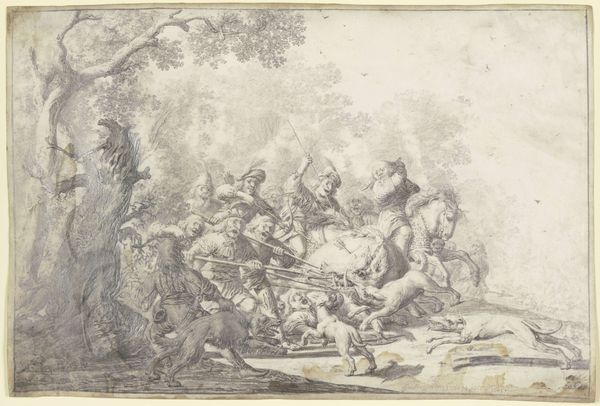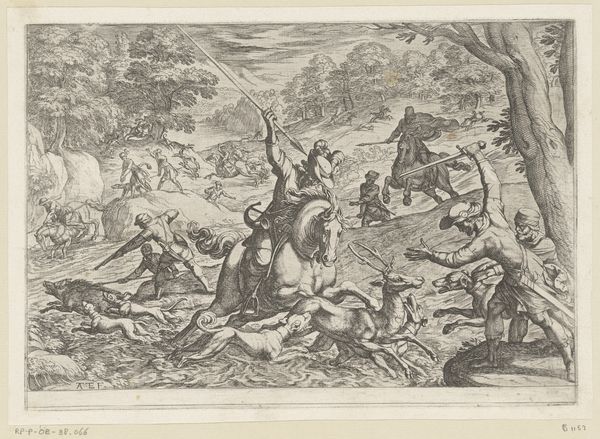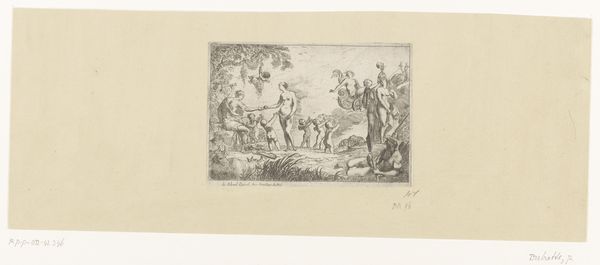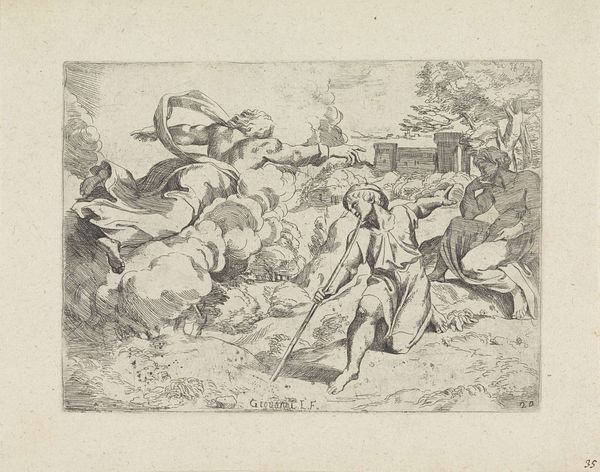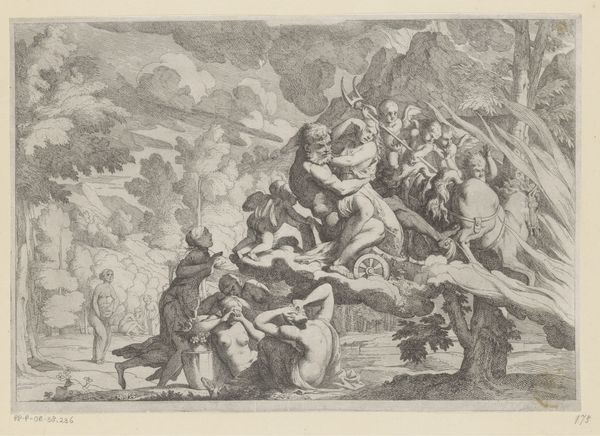
drawing, paper, ink, pencil
#
drawing
#
allegory
#
baroque
#
figuration
#
paper
#
ink
#
group-portraits
#
pencil
#
genre-painting
Dimensions: height 294 mm, width 406 mm
Copyright: Rijks Museum: Open Domain
Editor: Here we have Cornelis Holsteyn’s “Bacchus,” created sometime between 1628 and 1658. It’s a drawing in ink and pencil on paper. I’m struck by the sheer number of cherubic figures. What stories do you think the artist is trying to tell with this imagery? Curator: These aren’t just cherubs; they're likely putti, representing the entourage of Bacchus, the Roman god of wine and revelry. Look closely; do you see the symbols associated with him? The wine barrel they’re clambering on, the overflowing basket of fruit. Holsteyn uses these familiar emblems to invoke not just Bacchus himself, but the entire intoxicating world associated with him. The imagery conjures associations of hedonism. Editor: So, the abundance and carefree playfulness is very deliberate? It feels almost… excessive. Curator: Exactly. This depiction connects to a long artistic tradition that employs classical figures to explore human nature. What might the artist be saying about our relationship with pleasure, with abandon? The inclusion of the bull is curious. Perhaps strength? Virility? It almost becomes overwhelming, chaotic even, wouldn't you agree? The sheer quantity of the putti might even symbolize lack of control, the loss of control granted with intoxication. Editor: I never considered the number of figures contributing to the overall message, that’s really insightful! I was so focused on individual figures I missed the point of their aggregate presence. Curator: Think about how visual symbols carry weight over time, the cultural memory embedded in them. This drawing invites us to not just look, but to decode, to participate in a visual conversation that spans centuries. The piece serves as a great exemplar of complex, lasting ideas represented through relatively straightforward figures. Editor: This has changed how I view the artwork altogether. I will remember to appreciate visual history as much as individual stories from now on.
Comments
No comments
Be the first to comment and join the conversation on the ultimate creative platform.
